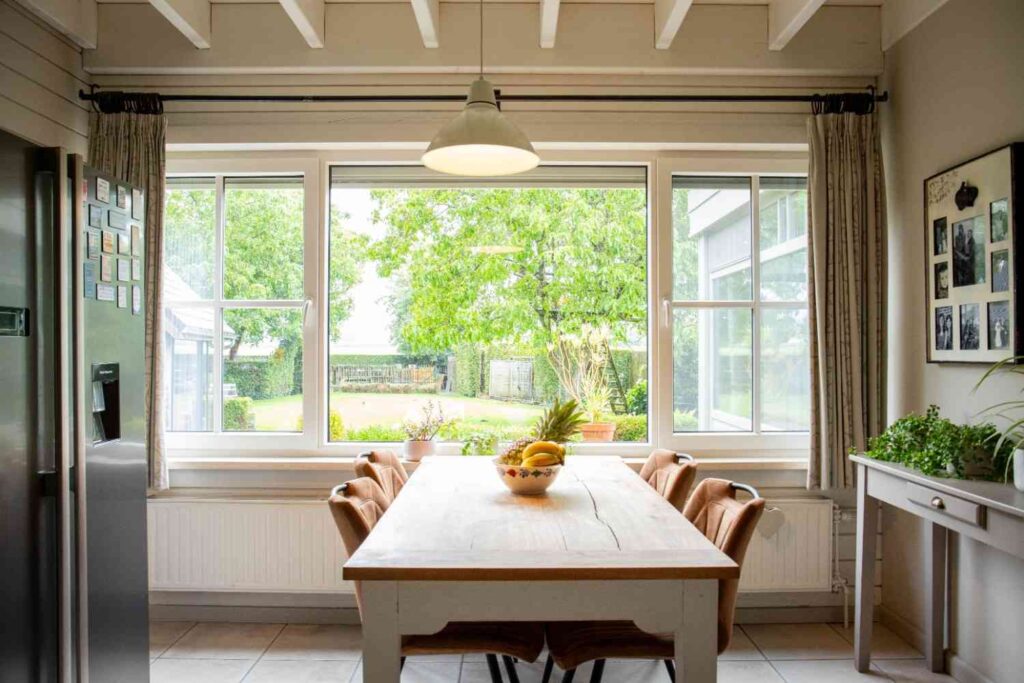Choosing the right window system is crucial in both modern architecture and home improvement. Windows do far more than meet structural needs—they help define a home’s ambience. They also contribute to comfort, energy efficiency, and the long-term durability of a building.
As people look for smarter solutions for their houses, the question of choosing between uPVC windows vs. wooden windows remains a running debate. The right choice can make a huge difference in your living experience.

Why the Right Window Choice Matters
Windows play a vital role in how a space looks, feels, and functions. They directly affect:
- Thermal insulation
- Indoor noise levels
- Ventilation and natural light
- The overall aesthetics of the interior
- Maintenance requirements over time
People have loved traditional windows made from wood for a long time because they have a natural appearance and evoke nostalgia. However, withstanding harsh weather conditions while avoiding wear and tear from daily use is too much to demand from wooden windows. This is where uPVC (unplasticised polyvinyl chloride) windows prove to be a better alternative.
Also Read: What is the Full Form of uPVC & Its Benefits for Windows?
Let’s compare uPVC windows vs. wooden windows technically and practically.
Key Features & Real-World Impact
1. Durability & Resistance
Wood, though visually warm and classic in appearance, is subject to warping, swelling, and rotting when exposed to moisture. This is even more problematic during monsoons or in areas with high humidity, such as the coastal regions of Mumbai or Chennai.
On the other hand, uPVC windows come with outstanding water resistance as well as weather resistance. They do not rot or oxidise and remain unaffected by termites or fungi, making them perfect for regions with varied weather patterns.
2. Thermal & Acoustic Insulation
Is uPVC better than wood for insulation purposes? Absolutely. uPVC windows are engineered to provide better sealing. When properly installed, they reduce thermal transfer, keeping indoor spaces cooler in summer and warmer in winter.
In addition to this, their multi-chambered profiles. These reduce noise transmission significantly, enabling the much-needed peace of silence in metropolitan cities like Delhi. uPVC sliding windows, especially, reduce traffic noise levels significantly while letting in ample natural light
3. Maintenance Requirements
To keep looking new as ever, wooden windows call for periodic sanding/painting or sealing in addition to maintenance. Their paint and structure might chip off and wear with use. Evidently, they cannot last long under harsh weather conditions.
For uPVC windows, minimal effort is needed; just wiping them with a soft, damp cloth will do. Their appearance does not change with time due to fading, flaking or warping – thus, they can be used for years.
4. Environmental Considerations
Wooden windows may cause deforestation and require certain chemicals for regular treatment and maintenance. This leads to a need to replace wooden windows often. In contrast, uPVC windows can be reused and offer a better and more sustainable alternative.
Also Read: Cost Saving Benefits of uPVC
Long-Term Benefits for User Experience
In the long run, the advantages of uPVC become even more evident:
- Consistent performance even during extreme weather conditions
- No discolouration, peeling or fading of paint
- Energy efficiency, reducing the need for air conditioning
- Seamless integration with modern smart home designs
For homeowners who wish to create a home that is not just beautiful but resilient and future-ready, uPVC windows offer a far more adaptable solution.
Also Read: Top 5 Benefits of Getting uPVC Windows For Your Home
The Koemmerling Advantage
Koemmerling is a leading manufacturer of premium uPVC window and door profiles.. Koemmerling designs products with advanced German technology that harmonise performance, aesthetics, and sustainability.
What makes Koemmerling different?
- The brand has a wide range of profile styles that meet different requirements. For example, casement windows, tilt and turn windows, among others, cater to both traditional and contemporary homes.
- Koemmerling provides high-quality materials that resist aging, withstand harsh Indian weather conditions, and maintain structural integrity over time.
- Embracing sustainable manufacturing practices, Koemmerling produces materials with long life cycles and recyclability. Modern architecture’s clean lines and minimalist approaches find their match in Koemmerling windows. They also fit into classic architecture styles.
- These uPVC window systems are timeless, maintaining the same high-quality standard – be it a high-rise in Bengaluru or a bungalow in Goa.
Conclusion
When comparing uPVC windows vs. wooden windows, the decision boils down to long-term performance, ease of maintenance, and modernity adaptability. Wooden windows may still be associated with a classic ambience and nostalgia but uPVC windows offer lasting value, comfort and reliability.
So, is uPVC better than wood? For today’s homeowners seeking durability, insulation, and elegance with minimal maintenance, the answer is a confident “Yes!”
Choose a trusted name like Koemmerling. Align your living experience with excellence in design, sustainability, and performance. Upgrade your lifestyle in terms of enduring quality and thoughtful living.



